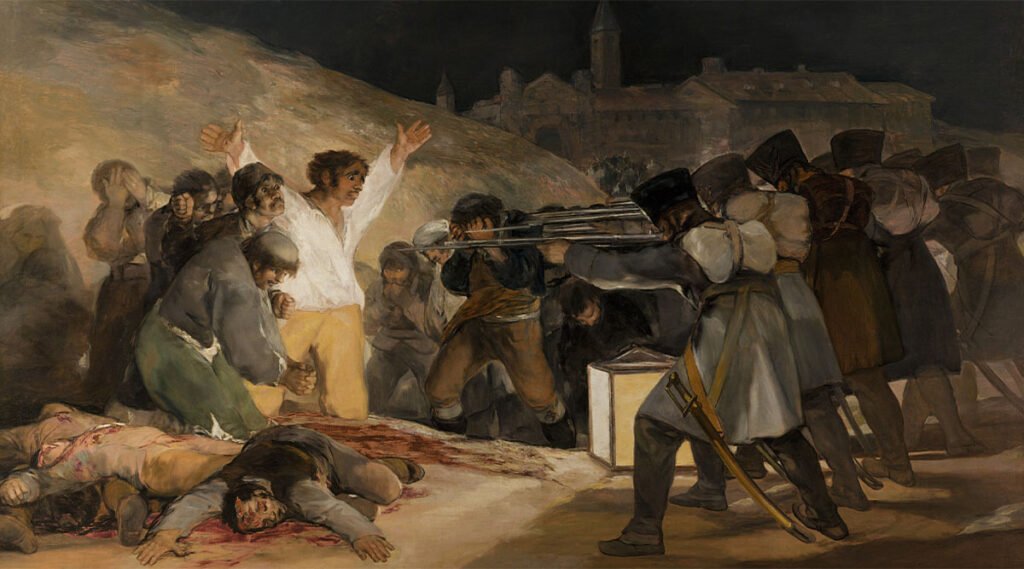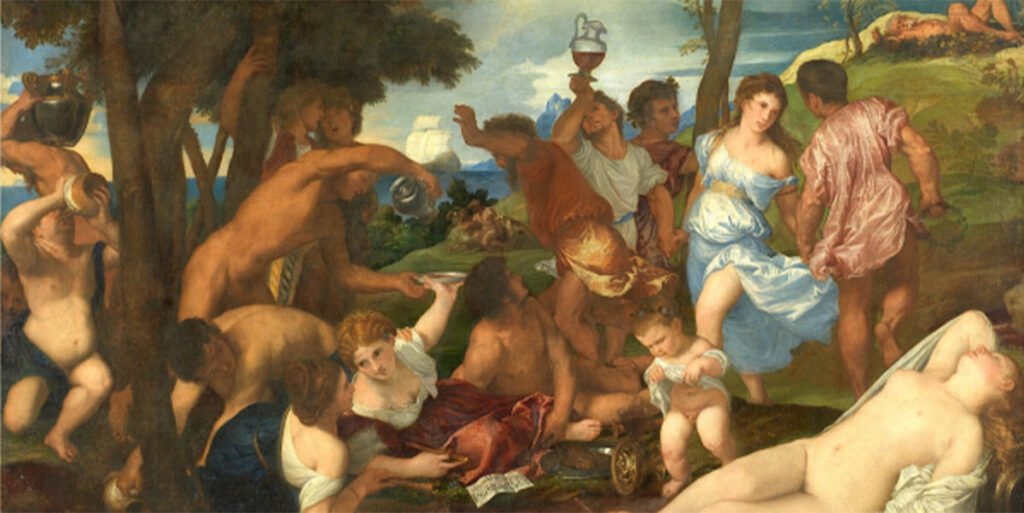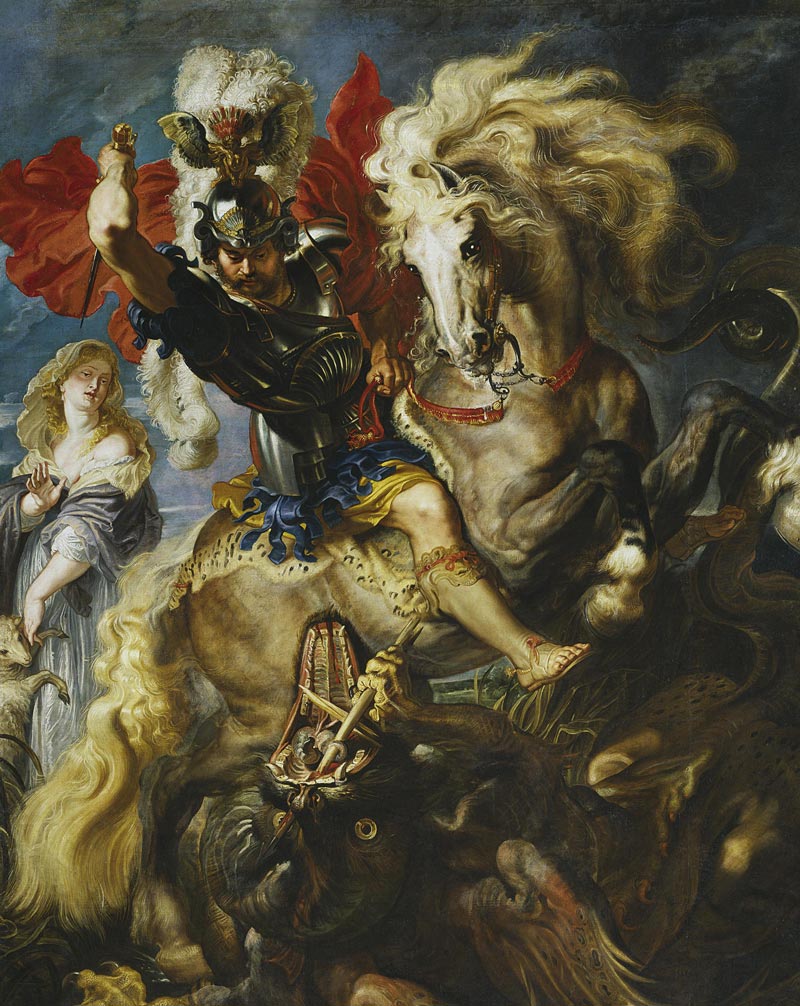Madrid’s streets are full of museums, each focusing on a different theme. However, only one of them keeps in its halls the most famous paintings of Spanish, Italian, Flemish, French and German masters.
The Prado Museum is located on the Paseo del Prado, in the Spanish capital – Madrid. The name of the museum is certainly familiar to everyone, because this institution is on the list of the largest museums on Earth. Its collection of works of art is considered one of the most beautiful in the world. No wonder that today no trip to Madrid can take place without a visit to this place.
History of the Prado Museum
The building that currently houses the Museo Nacional del Prado was designed in 1785 by Juan de Villanueva. The project was commissioned by Charles III, the then ruler of Spain. The king wanted to create a place where collections related to natural history would be gathered. However, the final destination of Villanueva’s building was slightly different. Charles III’s grandson, Ferdinand VII and his wife, Queen Maria Isabel Braganza, decided to create the Royal Museum of Painting and Sculpture in this place.
The institution was quickly renamed the National Museum of Painting and Sculpture, and later the Prado National Museum. The official opening of the building took place in the autumn of 1819. The name of this museum has not changed for over 200 years, but it has grown to the rank of one of the largest museums in the world.
Contemporary History of the Museum
The Prado Museum was created to show the artistry of Spanish art against the background of other European countries. With the expansion of the collection of works of art, the museum building itself also expanded. The first major reconstruction took place in 1918. Since then, the Museo del Prado has been able to accommodate 2,300 paintings. During the Spanish Civil War, over 500 paintings and drawings were removed from the museum’s collection.
In 2007, another significant reconstruction took place. At that time, a new part of the museum designed by Rafael Moneo was opened. Today, the Prado Museum houses approximately: 8,200 prints, 7,600 paintings, 4,800 etchings, 1,000 sculptures and hundreds of other works of art, including, among others, artistic crafts.
Architecture of the Prado Museum
The most important works of art, belonging to the main Prado collection, can still be seen in the classicist Edificio Villanueva building from the 18th century. The area of this building is currently as much as 22,043 m2, although only slightly more than half of it is the actual exhibition space. Walking along the famous Paseo del Prado, you will certainly not miss this building. It attracts the attention of all passers-by with its massive columns and a rectangular pediment, decorated with a sculptural frieze.
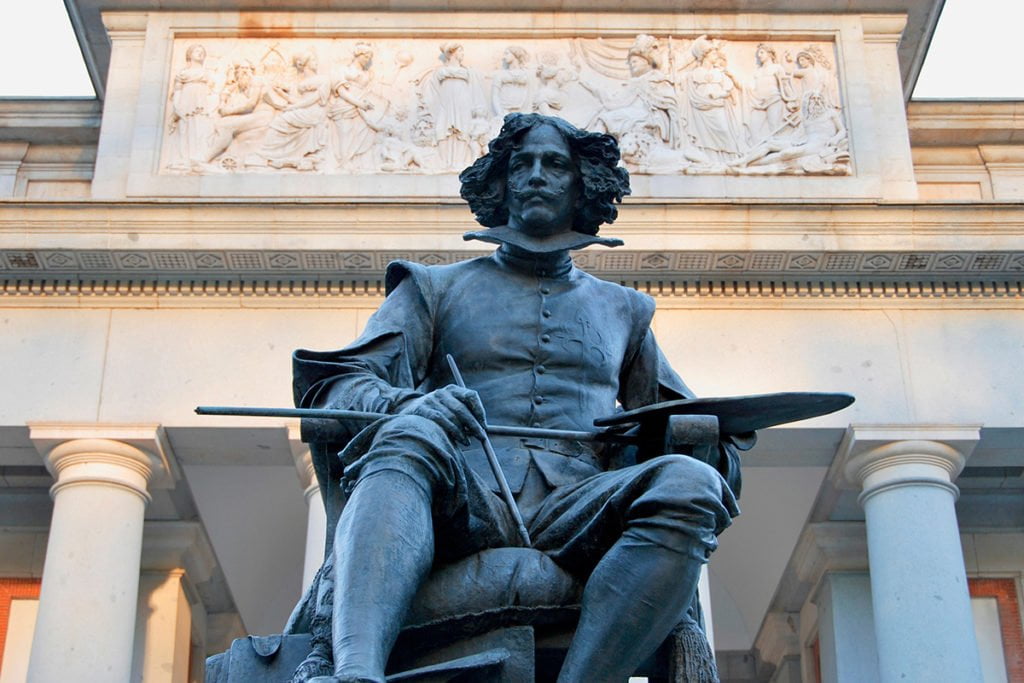
However, many tourists approach not the main facade, but the impressively sized sculpture standing in front of it, dedicated to Diego Velázquez. At the two remaining museum entrances there are other monuments of the most outstanding Spanish painters. Francisco de Goya guards the northern, and Bartolomé Esteban Murillo – the southern facade of the Madrid Museum of Art.
The Most Wonderful Works in the Museo del Prado
Visiting the Prado Museum is an opportunity to see up close the delightful sculptures, antique furniture, fans or unusual objects made of ceramics. However, it should not come as a surprise to anyone that the greatest treasure of this institution is art framed in frames. The paintings presented in the museum corridors are divided according to their origin.
Spanish Painting in the Prado Museum
Works of Spanish painting are definitely the largest part of the museum’s collection. The paintings that are national heritage are presented in the Prado Museum in the form of five separate parts.
- The first part is dedicated to paintings from the Middle Ages and the beginning of the Renaissance. This period in Spanish art is represented by, among others: Bartolomé Bermejo, Pedro Berruguete and Juana de Flandes.
- In the second part of the museum there are works by El Greco. It is in the Museo Nacional del Prado that you will see the most famous works of art by this artist, such as: “Resurrection”, “Holy Trinity”, “Descent of the Holy Spirit”, “Annunciation” or “Nobleman with his hand on his chest”. In the same zone, Spanish Renaissance painting by other artists is also placed.
- The third part of the exhibition is Spanish Baroque painting. The most outstanding names in this area are Diego Velazquez (e.g. “Las Meninas”, “Adoration of the Magi”, “The Triumph of Bacchus”), José de Ribera (e.g. “Jacob’s Dream”, “The Old Usurer”, “Martyrdom of St. Philip”), Francisco de Zurbarán (e.g. “Vision of the Heavenly Jerusalem”, “Agnus Dei”) or Alonso Cano (e.g. “The Spanish King”, “Madonna and Child”, “Crucifixion”).
- The next section is a great tribute to Francisco Goya. The Prado Museum has over 140 works by this artist. The most famous of these include: “The Naked Maja”, “The Clothed Maja”, “Christ on the Cross”, “Saturn Devouring His Son”, “The Family of Charles IV”, “The Execution of the Madrid Uprising”, “The Parasol” or “The Colossus”.
- In the fifth part, we find works from the 19th century. You will rather not find as many world-famous names there as in the other parts, while many of the works in this section are based on obvious references to the work of Francisco Goya.
Italian Painting in the Prado Museum
In addition to the excellent collection of Spanish painting, one of the most important museums in Europe also houses paintings by Italian artists. This part of the exhibition is divided into three sections, corresponding to different historical periods.
- The 15th and 16th centuries are represented by artists such as Sandro Botticelli (“The Cruel Hunt”), Fra Angelico (“Annunciation”), Rafael Santi (“Madonna with a fish”, “The Holy Family with a lamb”, “Cardinal”), Titian (“Feast of Venus”, “Bacchanalia”) or Jacopo Tintoretto (“Washing feet”).
- The zone dedicated entirely to the 17th century belongs to Caravaggio (“David and Goliath”), Annibale Carracci (“Venus, Adonis and Cupid”), Guercino (“Susanna and the Elders”) and Guido Reni (“Saint Sebastian”).
- The last area concerns the 18th century. There are, among others, works by Corrado Giaquinto (“Allegory of Peace and Justice”, “Apollo and Bacchus”) or Giambattista Tiepolo (“Immaculate Conception”).
Flemish Painting in the Prado Museum
The famous museum in Madrid also has a large (over 1000) collection of paintings by artists of the Flemish school. Among them, Hieronymus Bosch (“The Seven Deadly Sins”, “The Garden of Earthly Delights”, “The Haywain”), Jan van Eyck and Hans Memling, representing the 15th century, and Jan Gossaert or Pieter Bruegel (“The Triumph of Death”), which is the hallmark of the 16th century, are particularly noteworthy.
The area dedicated to Flemish art also exhibits many paintings created in the 17th century. The most magnificent artists of this group are Anton van Dyck and Peter Paul Rubens (“St. George fighting the dragon”, “The Judgment of Paris”, “The Three Graces”, “Orpheus and Eurydice”, “The Holy Family with St. Anne”).
German, British, French and Dutch Painting
The museum’s collection also includes a large collection of works by artists of other nationalities. During a walk through the Museo del Prado, you will get to know French or German painting, as well as paintings by British or Dutch painters. The most recognizable artists in this section of the museum are: Rembrandt, Nicolas Poussin, Albrecht Dürer, Joshua Reynolds and Anton Rafael Mengs.
Other Seats of the Prado Museum
Some may be surprised, but to see all the elements of the Prado collection exhibited in Madrid, a visit to the building at Paseo del Prado is not enough. The Prado National Museum creates an entire museum campus consisting of several buildings located in the heart of Madrid. In addition to the main headquarters, masterpieces of art are exhibited, among others, in the Monastery of Los Jerónimos, adjacent to Villanueva’s building.
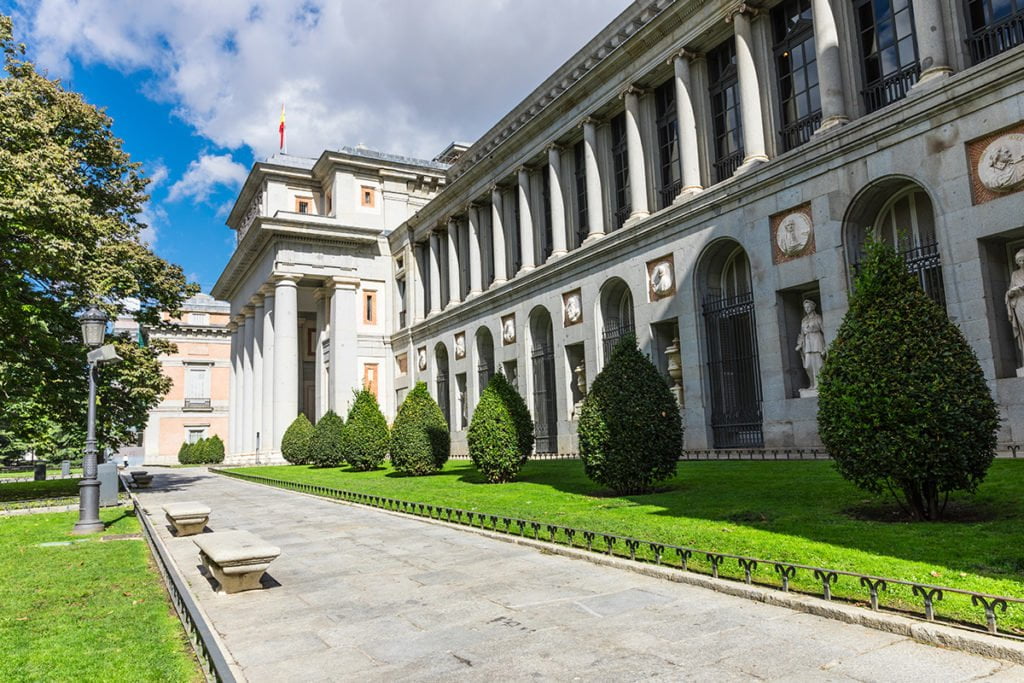
Casón del Buen Retiro, standing near the famous Retiro Park, today serves as a museum library, housing publications on painting, drawing, sculpture and decorative arts. The buildings belonging to the Prado Museum also include the Salón de Reinos of the Buen Retiro Palace, which was relatively recently added to the previous buildings. The good news is that you can visit all the locations with a ticket to the main museum, which you can buy, for example, here.
Paseo del Prado
If you’re exploring Madrid on foot, be sure to take a stroll along the nearby Paseo del Prado boulevard after your visit to the Prado Museum. It’s one of Madrid’s most important and oldest historical districts, stretching just over 1km from Plaza de Cibeles to Plaza del Emperador Carlos V (also known as Plaza de Atocha) – perfect for a short walk around the city. Along the way, you can enjoy a beautiful view from the Cibeles Palace viewpoint, visit the Royal Botanical Garden, or explore the Naval Museum.
Practical info
- It is best to buy tickets to Prado Museum in advance. You will then avoid standing in line and you will avoid the risk that all tickets have been sold out.
- Address: Calle de Ruiz de Alarcon, 23, 28014 Madrid, Spain
- Buy tickets on GetYourGvuide

